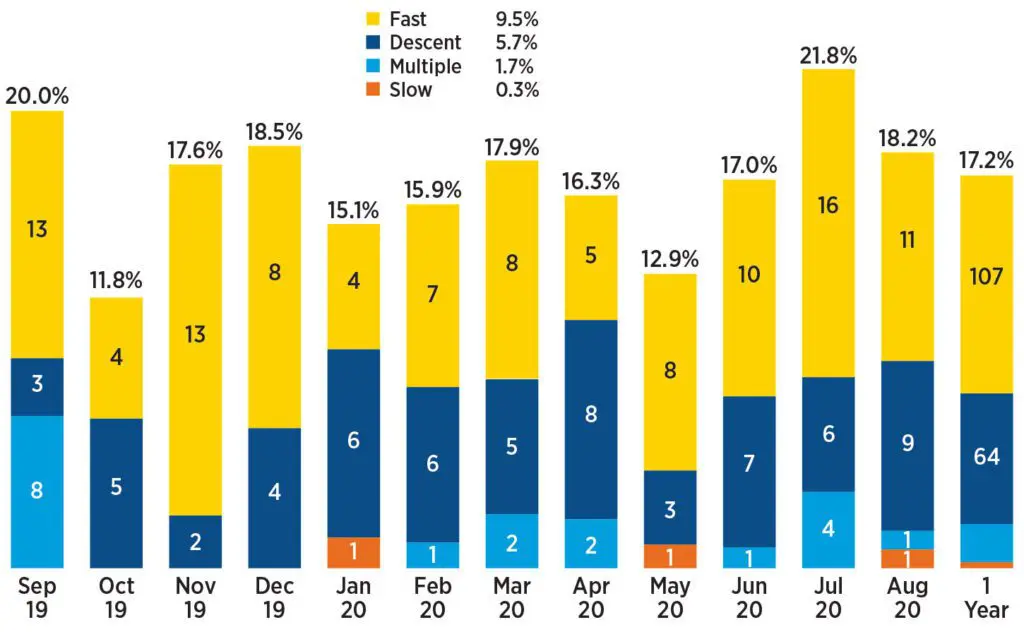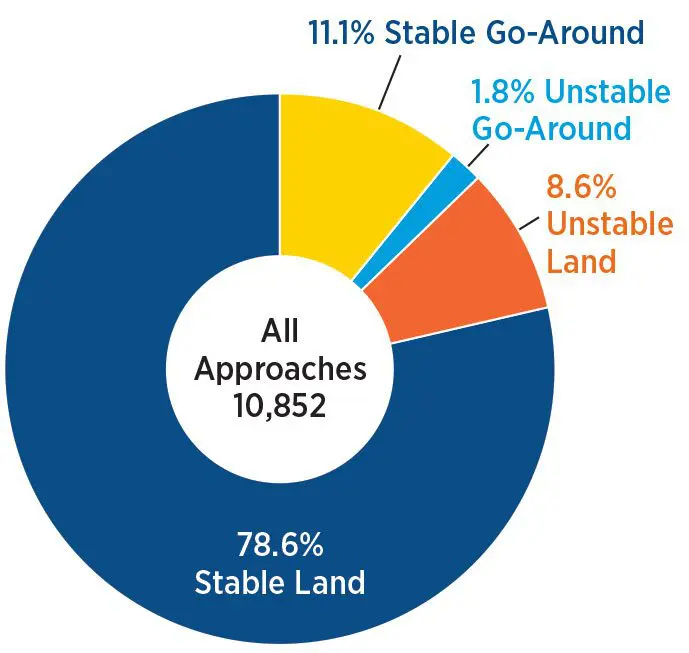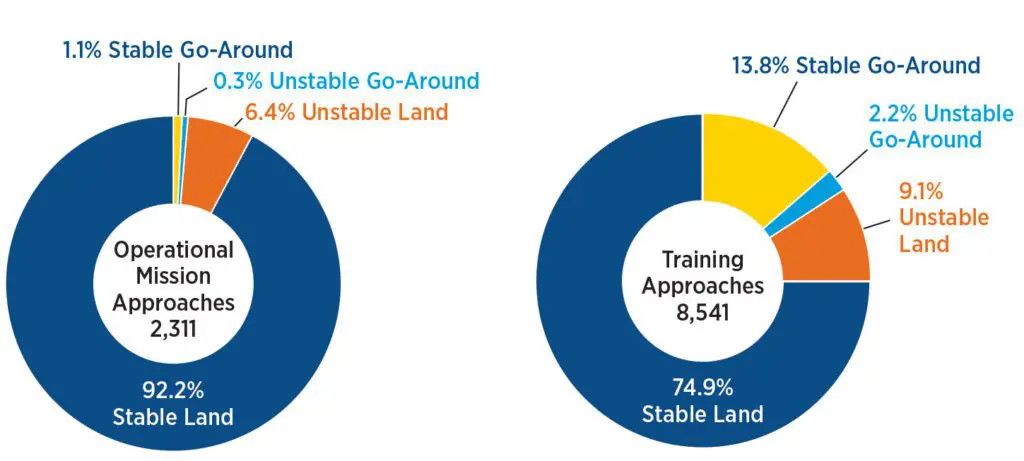Go-Arounds From Unstable Approaches
By MR. JAMES BUSBEA, C-5M MFOQA FLIGHT DATA ANALYST
Do the stabilized approach criteria directed in the Air Mobility Command (AMC) Supplement to Air Force Manual 11-202, Volume 3, significantly influence go-around rates? Analysis shows that, although the approach counts may vary significantly by Aircraft Mission-Design Series, overall percentage rates for go-arounds per unstable approach are very similar for all USAF Mobility Air Forces (MAF) airplanes. Therefore, the analysis focused on C-5 go-arounds to answer the opening question. Figure 1 depicts the rate of C-5 go-arounds from unstable approaches across 12 months, with an average annual rate of 17.2 percent. By comparison, the Flight Safety Foundation reports that the commercial airline industry’s unstable approaches result in an annual rate of approximately 3-percent go-arounds.1 On the surface, it appears that the MAF is nearly six times more likely to abide by the stabilized approach go-around requirement than our airline counterparts. On closer inspection, however, there may be something other than rule following and safety consciousness influencing these MAF go-around statistics.


During the past 2 years, AMC has used the rate of go-arounds following unstable approaches as a barometer of the crew force’s acceptance of stabilized approach guidance. Like the stabilized approach concept, the USAF adopted the practice of analyzing go-arounds following unstable approaches from its commercial counterparts. The airline industry does not practice go-arounds in the airplane for training, however. As a result, the rationale for airline go-arounds conveniently fit into two categories. Their go-arounds are motivated by either stabilized approach compliance or environmental factors. Examples of environmental factors would be when the runway environment is not in sight at decision height or the previous aircraft has not cleared the runway. By process of elimination, one can logically deduce that environmental factors influence most commercial go-arounds executed from stable approaches. We cannot apply the same logic because the USAF routinely conducts missed-approach training in its aircraft. Figure 2 shows the result for all C-5 approaches and illustrates a higher percentage of go-arounds from stable approaches than all unstable approaches combined. If training requirements influenced a vast majority of go-arounds from stable approaches, it follows that an undetermined number of unstable approaches were also predisposed to go around for training.

Regardless of the reason, if you have ever executed a go-around on an operational mission, you are part of an exclusive club. Figure 3 classifies all approaches by mission type using the associated Air Force Technical Order Form 781 mission symbol. This new analysis tool indicates that approaches are 11.4 times more likely to go around on training missions than on operational missions.Training missions foster a go-around-tolerant environment due to a missed-approach currency quota combined with the absence of perceived mission pressure, enemy threat, unfamiliar missed-approach procedures, or fuel reserve concerns.
Furthermore, Figure 4 shows that training approaches are five times more likely to go around when unstable. Conversely, go-around rates on operational missions more closely mimic that of the commercial industry. Crews on operational missions are not burdened by training requirements allowing us to make straightforward, two-category assumptions regarding their go-around rationale, similar to the crews on airline flights.

Aggregate analysis of all mission types (training and operational) is vital to fleet and airfield trend detection. When it comes to go-arounds, however, focusing on operational missions provides a more accurate indication of the crew force’s attitude toward approach stability policy. The analysis focused on C-5 statistics in this article; however, these statistics illustrate trends observed across the MAF. With that said, it appears we need to study the findings in more detail.
Why did 96 percent of the unstable approaches on operational missions land instead of going around? Did those crews perceive landing from an unstable approach as a safer alternative to a compulsory go-around? Perhaps they believed the stabilized approach guidance did not apply to their mission or that compliance would create a tactical disadvantage.
The worst thing crews can do is to assume the risk of disregarding a mandatory go-around and not report the reasons for doing so.
If you land from an unstable approach, particularly on an operational mission, share your experience with an Airman Safety Action Program report. Provide a short narrative of the circumstances so the appropriate authority can clarify or adjust expectations for everyone.
1 Final Report to Flight Safety Foundation, Go-Around Decision-Making and Execution Project, by Tzvetonmir Blajev and Capt. William Curtis, April 2017
